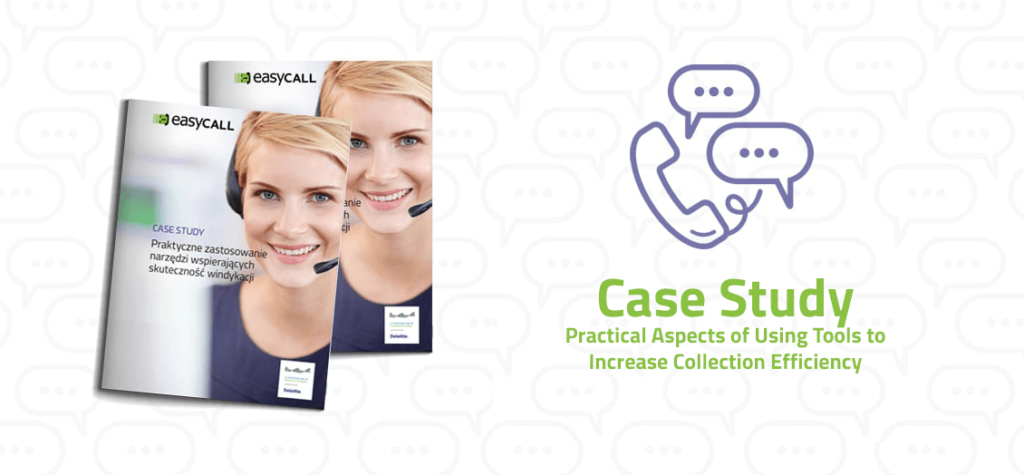Case Study: Practical Aspects of Using Tools to Increase Collection Efficiency

Check out our case study and learn how to improve collection efficiency by up to 75%. Our case study presents the practical application of tools to enhance collection effectiveness, including the use of automated collection processes. The automation of collections is carried out using our proprietary Customer Contact Automation Platform, which allows the replacement of call center agents with mass voice message (VMS) campaigns featuring built-in IVR menus and speech recognition (the so-called virtual agent). It can also foresee the use of other mass communication tools such as SMS or emails.
Our case study is available for download on the website.
By using tools to support collection activities, it is possible to increase the response rate from debtors by up to 75%, while simultaneously improving the efficiency of call center agents’ working time. Agents handling active calls and cases with the highest repayment potential are significantly more effective. Automating parts of the processes with lower repayment potential or importance (e.g., through outbound VMS campaigns with built-in IVR or combined with SMS) allows for flexible team management and quick scaling of ongoing activities.
Collections handled by call center agents are usually associated with low success rates in reaching debtors. This is due to outdated phone numbers in databases, inefficient contact attempts by call centers to numbers with voicemail, or debtors avoiding answering calls.
EasyCall offers tools that increase the number of successful phone contacts in groups of debtors with the highest repayment potential without increasing the number of call center agents. This is achieved through the use of a selected rotation model, numbering adjustments, voicemail detection, HLR updates, and automation of collection contacts following the segmentation of ongoing cases.
More information about the Customer Contact Automation Platform can be found in the blog article.
